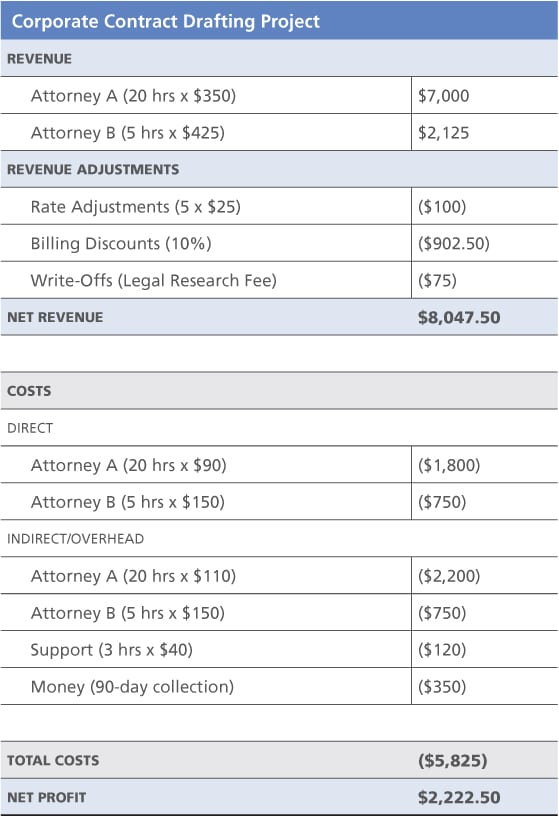Lawyers have been talking about and wrestling with “alternative billing methods” or “alternative fee agreements” for a decade or more. Recently, however, the conversation has shifted to “value billing.” Well, that’s a concept we can get behind. Once we understand what we all mean by value, of course. Enter Antigone Peyton. She has wrapped her practice, Cloudigy Law, around the concept. Over the next few months, she’ll lay it all out in our series on “Value 101.”
If you read my post on “How Hourly Billing Kills Law Firms,” maybe you’ve been inspired to figure out how to price certain legal services based on their value to a client, not the number of hours you spent. Now all you have to do is figure out what it costs to provide those legal services.
Now let’s be honest. Budgeting, cost tracking and other accounting metrics are often ignored by lawyers—regardless of firm size. But with a little investigative work, you’ll get a better handle on your practice and which of your firm services are actually profitable.
There are a number of ways to calculate the firm’s costs for particular services. Essentially, they involve an analysis of the fixed or overhead firm expenses that are constant (e.g., monthly office rent and supplies) and apply a proportionate amount of them to a particular service. Then the costs incurred in providing that service (including time invested by the law firm resources, legal research costs, etc.) should be added on.
Legal work generally involves several costs that should be analyzed when evaluating a project. Those costs may occur on both the production and revenue collection sides:
- Net Revenue = Revenue – Revenue Adjustment (rate and billing adjustments, write-offs)
- Production Costs = Billable Resources Costs + Overhead + Project Support Costs + Money Costs
Once you do the math, you calculate net profit by subtracting the production costs from net revenue. Here’s how this calculation might be applied:
People and overhead are generally the biggest cost drivers, and inefficiencies that increase these costs significantly impact firm profitability. But the first step, before you set a fixed price, is to determine the firm cost for services on a given project. I promise that it will be an eye-opening experience.
Want to learn more about analyzing firm costs and building an alternative billing method into your practice? Read Winning Alternatives to the Billable Hour by Mark Robertson and James Calloway. The book provides a soup-to-nuts overview of alternative billing practices and describes how to successfully integrate them into your practice.
After working in Big Law for many years, Antigone Peyton discovered her inner entrepreneur and founded Cloudigy Law, an intellectual property and technology law firm in “the cloud.” Now she muses about positive disruption in the legal services marketplace. Antigone’s an unabashed technophile and blogs about IP, elawyering, emerging tech and e-discovery issues on the Decoding IP blog. Before law, she worked as a scientist, conducting clinical and pre-clinical studies at a large medical institution. Antigone tweets at @antigonepeyton.
Illustration ©ImageZoo.

















